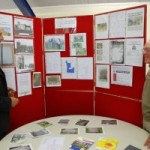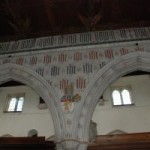It is always a great pleasure to welcome back a speaker who has given such splendid talks before and this was certainly the case when Mari Macdonald visited the group for the April meeting to speak about Easter customs.
Her previous subjects had been historical – The Battle of Edgehill and The Gunpowder Plot for instance, but this time she took as her topic the field of folklore and tradition, focussing particularly on Warwickshire. Most peopel knew a few of the traditions, but almost everyone learned something new.
Miss Macdonald started by tracing the origins of many Easter customs to the days of the Vikings and even earlier. the sun had always been an important part of primative worship and it is believed that the great disc of the sun was the origin of the football used in the town football matches played at Easter, when the game is virtually a free-for-all, ranging from one end of the town to the other in such places as Ashbourne in Derbyshire.
The sun also became a symbol of Jesus Christ’s reserection and as in so many instances the Christian faith took over ans adapted pagan customs. The speaker pointed out how English folklore had a habit of taking over and generally softening these customs, for instance the mysterious and powerful Easter hare had become the fluffy Easter bunny!
Miss Macdonald was left in no doubt as to how much her talk, with its mixture of humour and serious fact had been appreciated.








